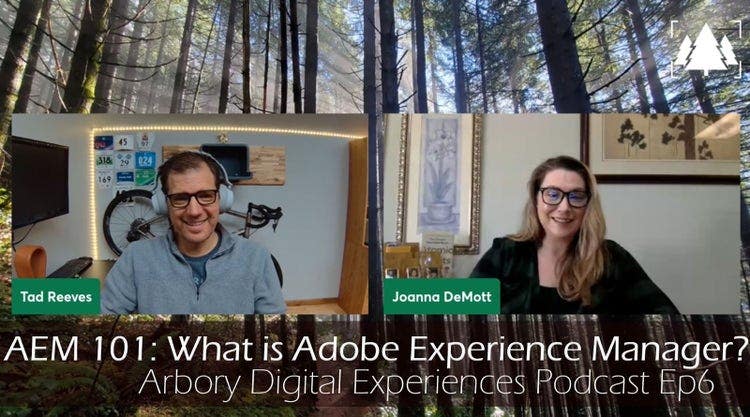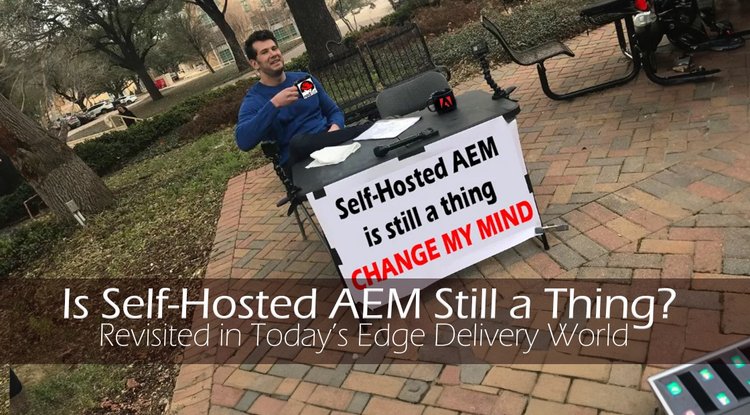
Advantages of AEM Over Other CMS

In today’s competitive digital landscape, selecting the right Content Management System (CMS) is critical for enterprises aiming to deliver personalized, scalable, and efficient digital experiences. Adobe Experience Manager (AEM) stands out as a premium choice for organizations that prioritize advanced functionality, seamless integrations, and enterprise-grade capabilities. In order to fully understand AEM's strengths, how does it compare to other CMSs?
Performance
AEM is well-known for its high performance, fast loading times, and responsive content delivery across multiple channels. It’s designed to handle complex content management tasks efficiently, ensuring users have a smooth and engaging experience.
AEM utilizes load balancers, caching systems, and content delivery networks to ensure top-of-the-line performance. Drupal and Sitecore, while powerful, may require more custom development to achieve comparable performance.
_________________________________________________________________________________________________
Scalability
AEM excels in scalability, supporting large enterprises with high volumes of content and users. It is ideal for organizations with global reach or those experiencing rapid growth.
_________________________________________________________________________________________________
Security
Security is a top concern for AEM, which provides robust features like data encryption, compliance with GDPR, and secure content delivery. This makes it a preferred choice for enterprises dealing with sensitive data and requiring rigorous security measures.
Drupal, Sitecore, and Optimizely also offer strong security features, but they can lack the integration capabilities that AEM offers with Adobe’s vastness in products. Contentful, being a headless CMS, requires additional setup for security and compliance measures.
_________________________________________________________________________________________________
Cost
AEM is known for its higher upfront costs due to its comprehensive features and enterprise-grade capabilities. However, the investment often pays off in the long run with reduced development costs, improved user experience, and better integration with Adobe products. Drupal and Sitecore also have large licensing fees, but they offer more flexibility in pricing models. Optimizely and Contentful typically have lower costs, but may require additional custom development to achieve similar functionality.
The choice of the best content management solution for your company largely depends on your company's size and specific use cases.
_________________________________________________________________________________________________
Learning Curve
AEM’s learning curve is steep due to its complex interface and extensive feature set. However, Adobe provides robust resources including documentation, training programs, and community forums to help users get up to speed.
Drupal and Sitecore also require dedicated training, though they offer more community support and third-party resources.
Optimizely and Contentful are generally easier to learn, especially for users without extensive CMS experience, but this simplicity can come at the cost of advanced functionality and integration capabilities.
_________________________________________________________________________________________________
Integrations
AEM shines in its ability to integrate seamlessly with Adobe’s suite of products, such as Adobe Analytics, Adobe Target, Adobe Campaign, and Adobe Commerce. This allows businesses to create cohesive digital experiences with personalized content delivery and data-driven insights. Drupal, Sitecore, and Optimizely offer integration capabilities, but they may not be as tightly integrated with their ecosystems. Contentful, being headless, requires more customization for integrations with other systems, making it less straightforward compared to AEM.
_________________________________________________________________________________________________
Personalization and Customizability
AEM excels in its personalized content delivery capabilities, enabling businesses to create tailored experiences for individual users without extensive coding. Its powerful WYSIWYG editor, workflow, and template management features allow for extensive customization.
In contrast, platforms like Drupal, Sitecore, and Optimizely offer similar customization options, but may require more advanced technical knowledge. Contentful’s headless approach requires developers to build custom solutions for personalization, making it less user-friendly for marketers.
_________________________________________________________________________________________________

_________________________________________________________________________________________________
CMS Comparison Overview
WordPress VIP
Though highly customizable and user-friendly, WordPress VIP’s monolithic architecture can become a bottleneck at scale. Heavy plugin reliance and backend inefficiencies can cause performance issues for high-traffic, enterprise-level sites.
Drupal
While powerful and open-source, Drupal requires a steep learning curve and substantial developer resources for optimization. Its update and deployment processes can be complex and lack what AEM provides.
Sitecore
A known competitor, Sitecore offers personalization and multi-language support. However, it's still less integrated and more complex to implement than AEM, with higher development cycles and lower overall market adoption.
Contentful
A headless CMS focused on developer flexibility. While modern and scalable, Contentful requires building the entire frontend separately and lacks built-in asset management, making enterprise-level development more complex than with AEM.
Optimizely
Optimizely offers a strong combination of content management and digital experience optimization with a user-friendly interface. While it provides good personalization and experimentation tools, it often requires additional customization and developer involvement for complex workflows. Its integration ecosystem is well-integrated, but not as well as Adobe's.
_________________________________________________________________________________________________
Conclusion
If you're seeking a CMS that can meet the demands of a global, multi-brand, multi-channel enterprise, Adobe Experience Manager is the standard. Its unmatched integration, scalability, personalization, and enterprise readiness make it the top choice for organizations serious about digital experience.
At Arbory Digital, we’ve helped some of the world’s leading companies implement and optimize AEM. Whether you're struggling with legacy CMS performance, planning a migration, or need tailored guidance—our experienced team is here to help.
Need help deciding which CMS is right for your organization? Reach out—we’re happy to discuss your digital goals and share our insights.
For more references, refer to:
https://blog.arborydigital.com/best-cms-for-enterprise
https://www.hurix.com/blogs/aem-vs-other-cms-platforms-why-aem-stands-out-in/

Chase Hollander
AEM Developer at Arbory Digital
Developer, Agile Certified Professional, and consultant with experience in AEM
Podcast Episodes & Blog Posts

What is AEM? What is Adobe Experience Manager used for? We’ve attempted to do a basic explanation of what AEM is and does in 30 minutes or less - and somehow we managed to make it, despite the Fire Department randomly showing up about 19 minutes into the podcast recording!.

How much do you know about the tools at your disposal to optimize your site's performance in mainland China? And even if you don't have a Chinese-language site, do you need to be concerned with in-China performance? YOU DO!

In today’s war between cloud repatriation and blazingly-fast new Edge Delivery services, let’s revisit: is self-hosted AEM still a thing?